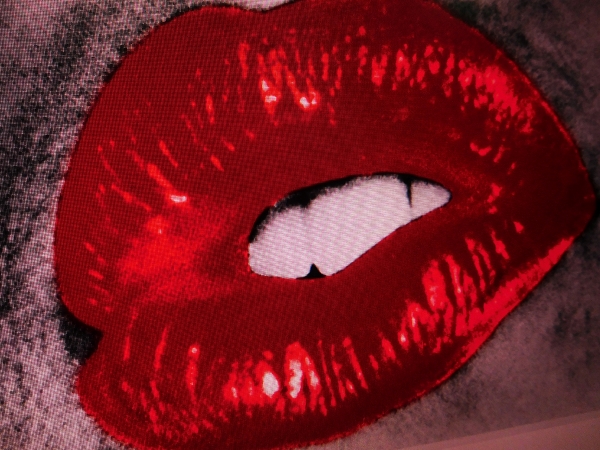
From Tokyo Boogie Woogie, 2018 ©Daido Moriyama Photo Foundation
Moriyama Daido's Tokyo: ongoing
Jun. 2—Sep. 22, 2020
- Jun. 2—Sep. 22, 2020
- Closed Mondays (except when Monday falls on a holiday, in which case the museum is open and closed the following day) *However, the museum will be open on the Mondays of August 10 and September 21.(Please check the latest information.)
- Admission:Adults ¥700 ( 560 )/College Students ¥560 ( 440 )/High School and Junior High School Students, Over 65 ¥350 ( 280 ).
Known as a master of snapshots, Moriyama Daido, one of Japan’s preeminent photographers, began his career in the 1960s. His grainy, high-contrast style, which came to be described as “are, bure, boke” (rough, blurry, out of focus), sent shockwaves through the photography world. Over the years, Moriyama has held large exhibitions at museums in a host of different countries, and received countless international photography prizes, including the 2019 Hasselblad Award, and today, 55 years after his debut, he remains active at the forefront of the art world.
Based on the theme of “ongoing,” this exhibition focuses the city of Tokyo as seen through the constantly sprinting Moriyama’s lens in his latest color and monochrome works. We hope that you will enjoy the unceasing allure of Moriyama Daido’s photography.
From the series Pretty Woman, 2017 ©Daido Moriyama Photo Foundation
From the series Pretty Woman, 2017 ©Daido Moriyama Photo FoundationPretty Woman_yoko450.jpg)
From the series Pretty Woman, 2017 ©Daido Moriyama Photo Foundation
From the series Pretty Woman, 2017 ©Daido Moriyama Photo FoundationPretty Woman_yoko450.jpg)
From the series Pretty Woman, 2017 ©Daido Moriyama Photo Foundation
Stray Dog, Misawa, Aomori, 1971 ©Daido Moriyama Photo Foundation
MORIYAMA Daido [1938-]
Born in Osaka in 1938. Launching his career as a designer, he became the assistant to Takeji Iwamiya in 1960, then was referred by Iwamiya to join photographic collective VIVO and moved to Tokyo in 1961. With VIVO’s discontinuation, he became the assistant of Eikoh Hosoe and was involved in the production of Ordeal by Roses (Shueisha, 1963). In 1967, he was recognized with the New Artist Award from the Japan Photo Critics Association for his works, including the photo series “Nippon Gekijo” published in photography magazine Camera Mainichi. From 1968-70, he joined the experimental photography magazine Provoke from its second issue and made a lasting impact on Japanese photography with the release of a radical new style called ‘are-bure-boke’ (meaning ‘grainy, blurry, out-of-focus’ in Japanese). While continuing to actively and consistently capture snapshots of everyday scenes on the streets, from 1974-80 he also produced many young photographers through his WORKSHOP photography school and “Image Shop CAMP” gallery. In 1974, his works were accepted by the “New Japanese Photography” exhibition that toured museums in the US, including the Museum of Modern Art (MoMA) in New York, Saint Louis Art Museum, and San Francisco Museum of Modern Art (SFMoMA). In 1999, a retrospective exhibition of his works was held at the SFMoMa, which then toured other museums including the MoMA in New York. Other notable large-scale exhibitions include solo exhibitions in 2003 and 2016 at the Fondation Cartier pour l'Art Contemporain and a joint exhibition with William Klein at the Tate Modern in 2013.
Major awards include: 2003 44th Mainichi Art Award, 2004 Cultural Award from the German Society for Photography, 2012 Infinity Award from the International Center of Photography (New York), 2019 Hasselblad Foundation International Award in Photography, and others. Major photo collections include: "Nippon Gekijo Shashincho [Japan: A Photo Theater]" (1968, Muromachi Shobo), "Shashin yo Sayonara [Farewell Photography]" (1972, Shashin Hyoronsha), "Tono Monogatari [The Tales of Tono]"(1976, Asahi Sonorama), "Hikari to Kage [Light and Shadow]"(1982, Tojusha),"Inu no Kioku [Memories of a Dog]" (1982, Tojusha), "Hawaii" (2007, Getsuyosha), "Inu to Ami Taitsu [Dog and Fishnet Tights]" (2015, Getsuyosha), "K" (2017, Getsuyosha), "Pretty Woman"(2017, Akio Nagasawa Publishing), and others.

